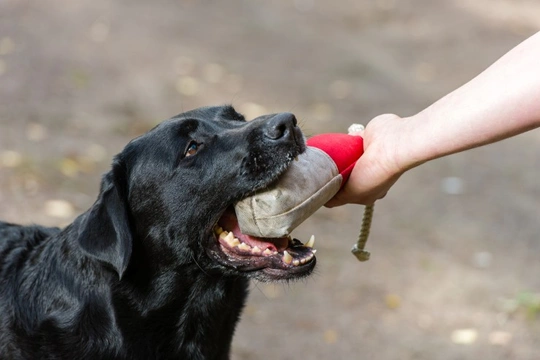
How to teach your Labrador retriever puppy to retrieve
The Labrador retriever is one of the world’s best-known retrieving dog breeds – after all, the clue is in the name! They are also really versatile dogs that are intelligent and keen to learn, which helps to make them the fifth most popular dog breed in the UK overall. If you are planning to buy a Labrador retriever puppy, you’re probably already planning how you will train them, and what you want to do with your dog when they’re adult – and may well be interested to know when and how you can teach your new pup to start retrieving.
Labradors are very personable dogs that love to have a job to do and someone to work with, and their inherent retrieving trait is something that dogs of the breed begin to exhibit a natural flair for early on.
Harnessing this trait and directing it in positive ways is the key to training a Lab to become a good retriever – and sets your expectations for how the dog acts in play and if taking part in sport later on.
In this article we will look at the Labrador retriever’s skills in retrieving things, and how to train and enable them to fine-tune it. Read on to learn more.
Training a Labrador to retrieve
It is a rare Labrador that does not display an innate propensity to retrieve, often from a very early age. So training a Labrador to retrieve is less about teaching a new and totally unknown skill to your dog, and more about polishing their skills, getting them to retrieve on command, and to follow a set behavioural pattern in terms of how they retrieve and what they do next.
Labrador retrievers are also a very intelligent dog breed, which helps them to develop their retrieving abilities through play, even when young. When your dog brings you a toy and you throw it, or if you pick up a toy they’re not playing with and throw it, Labs soon learn that if they bring it back to you, you will throw it again and continue the game.
However, your dog needs to be able to do this on command and vitally, be willing to surrender their toy when they catch it, instead of running off with it or refusing to hand it over!
When to start retrieving work with your puppy?
You can teach your new Lab pup to start retrieving from very soon after you first bring them home – training and establishing rules are an integral part of your Lab’s early training, and you should assign specific commands for retrieving, coming back to you, and giving up the toy upon command.
Getting your pup to give up their toy is generally more likely to be a problem than getting your pup to follow and pick it up in the first place – so integrate a “drop it” training command and reinforce this by offering a treat in exchange, so that your dog receives a reward for compliance.
Over time, phase the treats out and retain the command and praise – whilst occasionally giving a treat too to keep your dog guessing.
Begin with short throws, gaining and retaining your pup’s full attention – you can do this in the home or garden when your pup is little, progressing to retrieving when out on walks or in the park as you go along.
The presence of other dogs playing can provide a diversion for your dog, so work up to busy situations gradually whilst taking care to build your dog’s skills and retain their attention on you and the goal.
A perfect retrieve is one that begins with your dog’s attention – they should be focusing on the toy and where it is about to go before you even release it. Then, your dog should go directly for the toy – or start looking for it – and bring it straight back to you without meandering around, before sitting, dropping it and waiting for direction immediately.
This control and concentration is the difference between retrieving and playing fetch – and is what you need to aim for. Keep the game interesting by changing toys, going to new areas and throwing the toys in different directions and situations to keep your dog working.
Additionally, it is worth bearing in mind that Labs are committed hard workers who try really hard to please – and may well keep on trying long after the point at which they get tired or want to stop. This is something to keep a close eye on, calling an end to the game when your dog is tired or has had enough.
You might find that your dog will let you know when they are getting tired because they will be slower and more reluctant to surrender the toy – as before, insist that your dog surrenders the toy, but then end the game with lots of praise, and let your dog cool down and finish off.
Land and water
Labradors are usually just as at home on water as they are on land, and many dogs of the breed are keen swimmers who really enjoy water retrieving.
If you can enable this, you can give your dog a great full-body low impact workout through swimming – but you need to choose where your dog swims carefully to make sure the water is clean, and the environment is safe and suitable for your dog.
Lakes and ponds can grow blue-green algae blooms in hot weather that are dangerous for dogs, and remember that even on hot days, the water itself may be dangerously cold, so be very careful about how and when you allow your dog to swim and retrieve.



